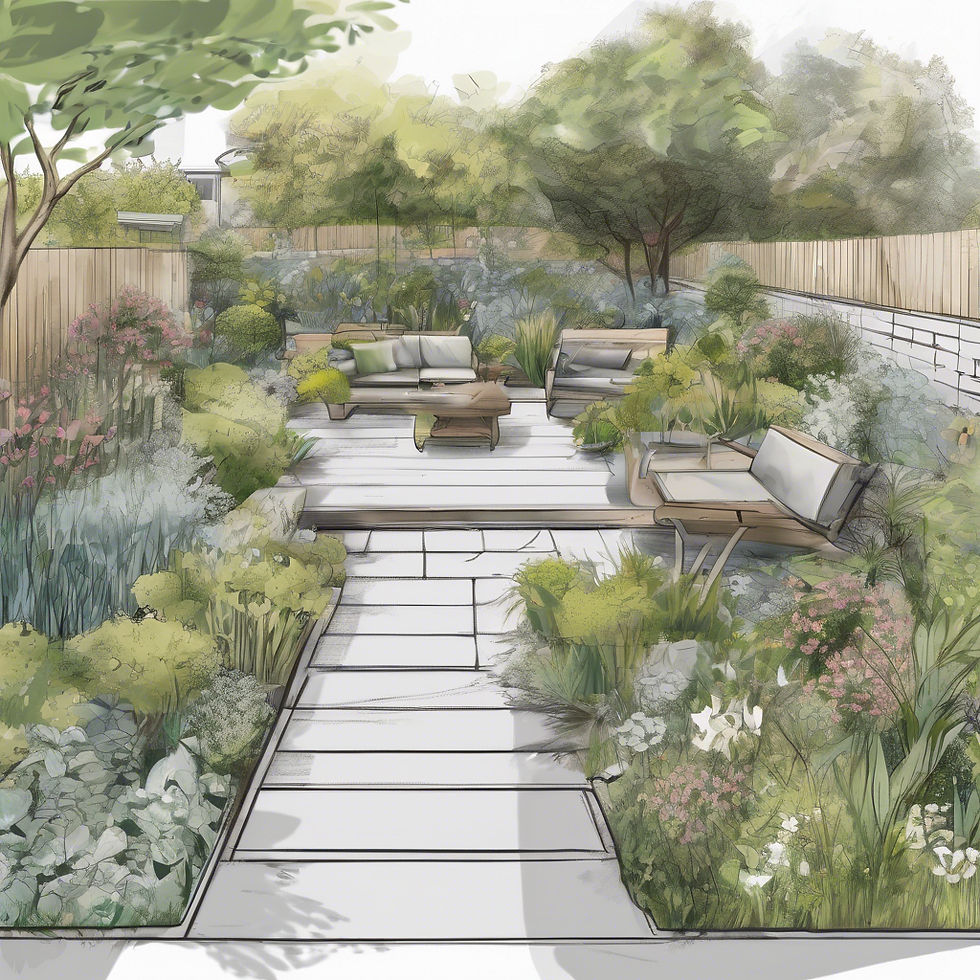How to Attract Wildlife to Your Small Urban Garden
- gpgardendesign
- Nov 24, 2024
- 4 min read
Urban living often means giving up green spaces and the natural beauty they bring. However, you don’t need a large property to create a thriving wildlife habitat. Even the smallest urban balconies, yards, or community spaces can transform into vibrant zones for local wildlife. In this blog, we will discuss how you can attract nature into your backyard and turn it into a welcoming oasis for birds, bees, butterflies, and more.
The Importance of Urban Wildlife Gardens
As cities grow, natural habitats shrink, leading to a significant decrease in biodiversity. Urban wildlife gardens play a crucial role in supporting local ecosystems. They offer crucial refuge for many species, while also providing benefits for people, such as improved air quality, mental well-being, and vital opportunities to connect with nature. Research shows that spending time in green spaces can increase happiness levels by up to 30%.
Creating an urban wildlife garden is more than just beautifying your space; it is a way to nurture the environment. It allows city dwellers to engage with nature in fulfilling and impactful ways.
Planning Your Urban Wildlife Garden
Assess Your Space
Your first step in creating a wildlife garden is assessing your space. Do you have a balcony, patio, or a small yard? Identifying what you have will help you maximize your potential. For example, a balcony measuring just 4 feet by 8 feet can support a variety of plants when creatively arranged!

Choose a Mixture of Native Structural and Flowering Plants
Selecting native plants is key to a successful wildlife garden. Native species are adapted to your local climate and require less maintenance. They also provide the best food and shelter for local wildlife. For instance, native flowers like coneflowers, which attract 25% more pollinators than non-native varieties, and black-eyed Susans can draw in butterflies. Shrubs like elderberry and serviceberry not only offer food for birds but also create shelter.
By mixing different plant types—annuals, perennials, and small trees—you can create a layered habitat that supports diverse species, leading to a healthier garden.
Create Shelter and Nesting Spots
To attract birds, consider adding birdhouses or providing nesting materials in your garden. For smaller wildlife, create hiding spots with fallen leaves, a pile of rocks, or small logs. For example, a simple brush pile in a corner of your yard can become a sanctuary for critters like frogs, toads, and insects.
Incorporate Water Sources
Water is essential for wildlife. A birdbath or even a small pond can attract various species. If space is limited, a shallow dish filled with pebbles and water will do the trick. Make sure to clean and refill it regularly. Statistics show that having a water feature increases bird visits by nearly 40%!
Attracting Pollinators
Pollinators like bees and butterflies are crucial for a healthy ecosystem but are often declining due to habitat loss. By incorporating blooming plants into your wildlife garden, you can create a refuge for these important creatures.
Plant for the Seasons
Select plants that bloom at different times throughout the growing season to ensure a continuous food supply. For example, early bloomers like crocuses and late-season favourites like asters provide vital resources to pollinators from spring through fall.
Avoid Pesticides
By choosing organic gardening practices, you not only protect your plants but also help maintain the delicate balance of life in your garden. Pesticides can harm beneficial insects, so consider natural remedies like introducing ladybugs, which can reduce aphid populations by up to 90%.
Engaging with Nature
Creating a wildlife oasis goes beyond planting; it’s also about actively engaging with your natural surroundings.
Observe and Document
Take time to observe the wildlife in your garden. Keep a journal or use your phone to record different species you encounter—from birds to butterflies. Studies show that keeping a nature journal can deepen your appreciation for local wildlife and motivate you to make adjustments to attract even more species.
Share Your Experience
Join local gardening clubs or online forums to share your experiences. Connecting with others who are passionate about urban wildlife gardens offers inspiration, practical tips, and camaraderie. You might discover unique plant varieties or innovative gardening techniques.
Nurturing Your Wildlife Oasis
Creating a wildlife garden in your backyard or urban space is a fulfilling project that benefits both nature and yourself. It presents an opportunity to support local biodiversity, enhance your surroundings, and engage with the vibrant life around you.
So, grab your gardening gloves, plant some native flora, and embark on your journey to cultivate a wildlife oasis today. Remember, every small step counts—your little corner of paradise can contribute to a more lively urban ecosystem, enriching the connection between city life and nature.

Urban Gardens can be created almost anywhere with a bit of thought and creativity. Using white planters and walls like the ones in the image above can create microclimates, maximising the potential for less hardy summer species. Walls can also be utilised with climbing plants, shelves for potted plants, hanging baskets or a sheltered seating area; every small space is unique and using walls can be a key factor in dictating your growing aspects.
_edited.png)





Comments